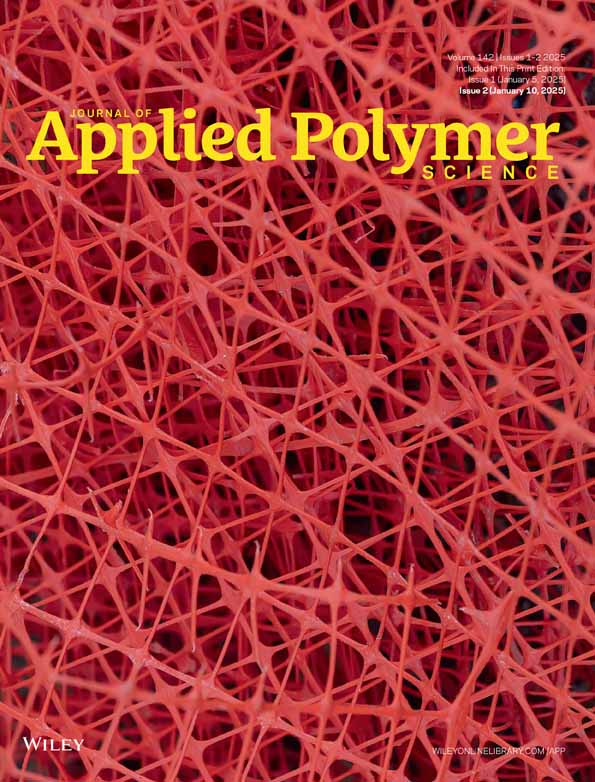Preparation of internally-plasticized poly(vinyl chloride) by grafting hyperbranched cardanol epoxy polyglycerol
Abstract
A novel epoxy plasticizer (HCEP) with a hyperbranched polyglycerol structure was synthesized using reduced glycerol and cashew phenol as raw materials. Then it was grafted onto poly(vinyl chloride) (PVC) through click reaction to form self-plasticized PVC. The structure of the product was characterized with various methods. The effects of the degree of internal plasticizer substitution on the properties of PVC were tested through dynamic mechanical, mechanical property, and thermogravimetric analyses. The amorphous dendritic structure of HCEP effectively enhances the free volume of grafted PVC, leading to a reduction in the glass transition temperature and a significant enhancement in flexibility at room temperature. The maximum elongation at break is 289.89%. The grafting of plasticizers onto PVC avoids the leaching of plasticizers during usage, providing a viable solution for reducing reliance on phthalate-based plasticizers.
CONFLICT OF INTEREST STATEMENT
The authors declare no conflict of interest.
Open Research
DATA AVAILABILITY STATEMENT
The date that support the findings of this study are available on request from the corresponding author. The date are not publicly available due to privacy.




